Five identical conducting plates, 1,2,3,4 and 5 are fixed parallel pltes equidistant from each other (see figure). A conductor connects plates 2 and 5 while another conductor joins 1 and 3. The junction of 1 and 3 and the plate 4 are connected to a source of constant emf V0. Find
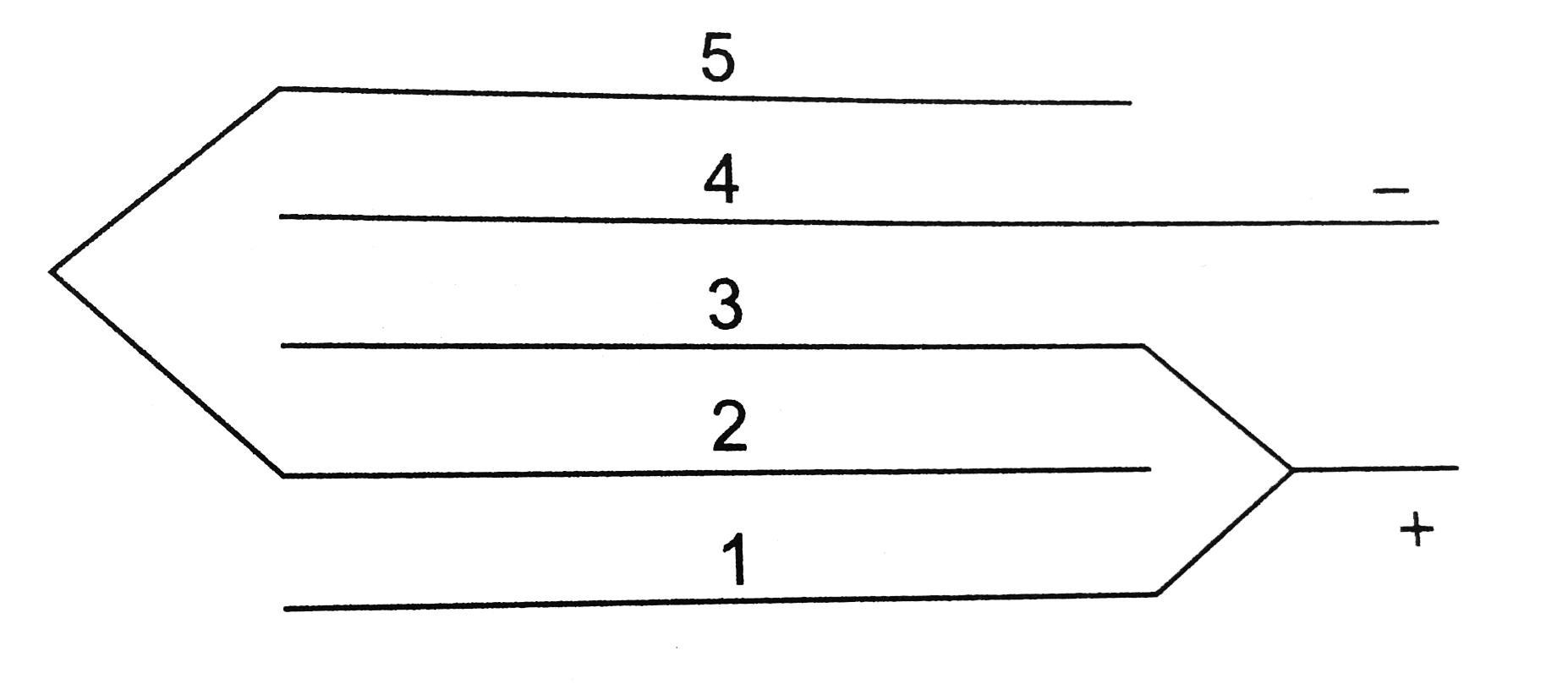
(a) the effective capacity of the system between the terminals of source.
(b) the charges on the plates 3 and 5. Given, d= distance between any two successive plates and A= area of either face of each plate.
i. The equivalent circuit is shown in. The system consists of four capacitors, i.e. C12,C32,C34, and C54. The capacity of each capacitor is (Kε0A/d)=C0
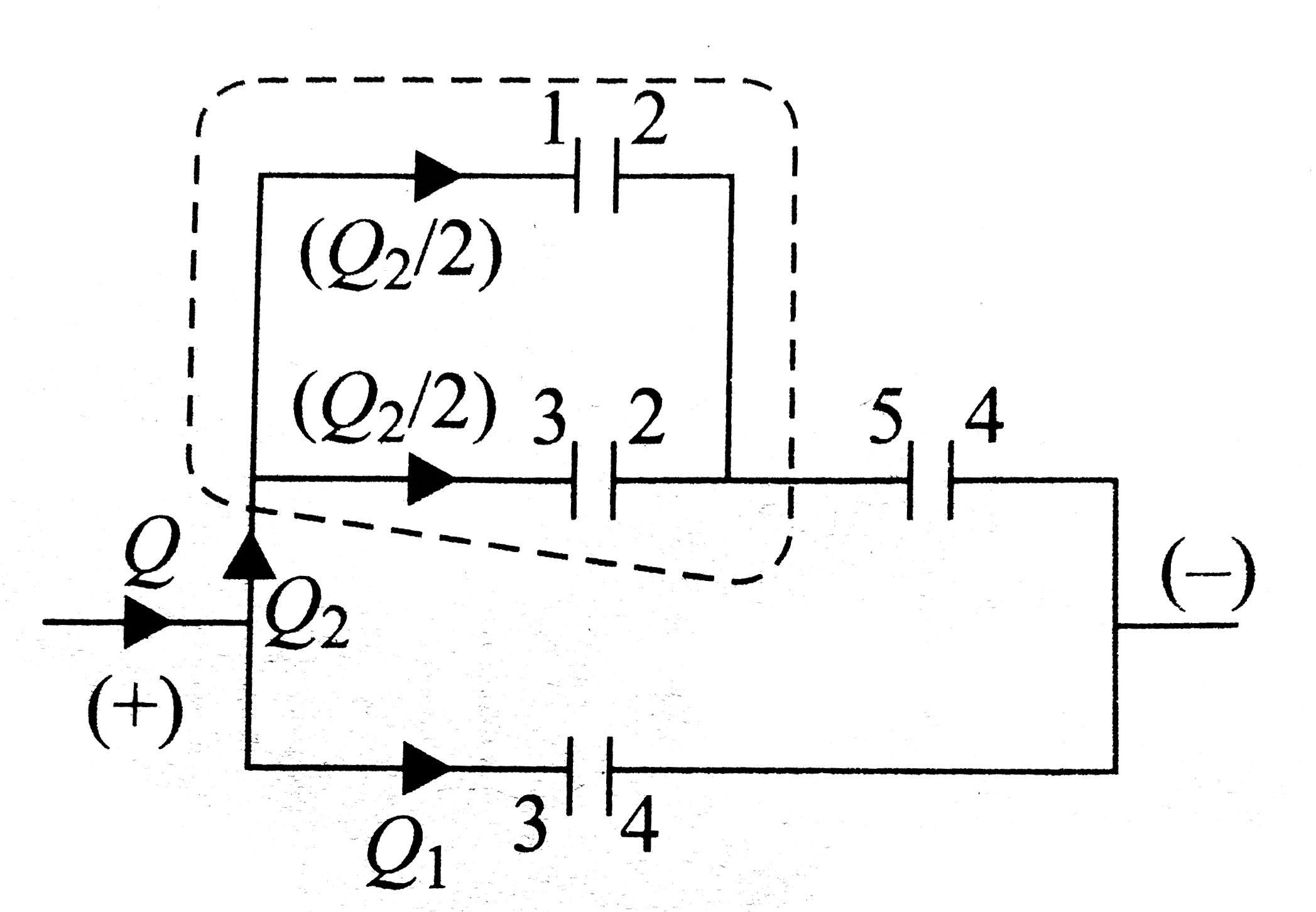
The capacitors C12 and C32 are in parallel, and their capacity is C0+C0=2C0. The capacitor C54. is series with the parallel combination of C12 andC32. Hence, the resultant capacity will be.
Ci=C0×1C0C0+2C0=2C03
Further, C34 is again in parallel with the combination C12,C32, and C54. Hence, the effective capacity is
Ceff.=C0+C0×2C0C0+2C0=53C053Kε0Ad
ii. Charge on plate 5 is equal to the charge on the upper half of the parallel combination. so
Q5=V0(23C0)=23Kε0AV0d
Charge on palte 3 on the surface facing 2 is equal to the potential differece across (3-2), i.e.,
C0=V0C0C0+2C0C0=Kε0AV03d
Net charge on plate 3 is
Q3=Kε0AV0d+Kε0AV03d=Kε0AV0d[1+13]
=43Kε0AdV0.
Topper's Solved these Questions
- BOOK - CENGAGE PHYSICS ENGLISHCHAPTER - CAPACITOR AND CAPACITANCEEXERCISE - Exercise 4.113videos
CAPACITOR AND CAPACITANCE
- BOOK - CENGAGE PHYSICS ENGLISHCHAPTER - CAPACITOR AND CAPACITANCEEXERCISE - Exercise 4.232videos
CAPACITOR AND CAPACITANCE
- BOOK - CENGAGE PHYSICS ENGLISHCHAPTER - CAPACITOR AND CAPACITANCEEXERCISE - Integer5videos
CAPACITOR AND CAPACITANCE
- BOOK - CENGAGE PHYSICS ENGLISHCHAPTER - ATOMIC PHYSICSEXERCISE - ddp.4.315videos
ATOMIC PHYSICS
- BOOK - CENGAGE PHYSICS ENGLISHCHAPTER - CENGAGE PHYSICS DPPEXERCISE - subjective type51videos
CENGAGE PHYSICS DPP
Similar Questions
Five identical conducting plates 1,2,3,4 and 5 are fixed parallel to and equidistant from each other as shown in figure. Plate 2 and 5 are connected by a conductor while 1 and 3 are joined by another conductor . The junction of 1 and 3 and the plate 4 are connected to a source of constant emf V0.
Match the following :

 View Solution
View SolutionFive identical plates of equal area A are placed parallel to each other and at equal distance d from each other as shown in the figure. The effective capacity of the system between the terminals A and B is
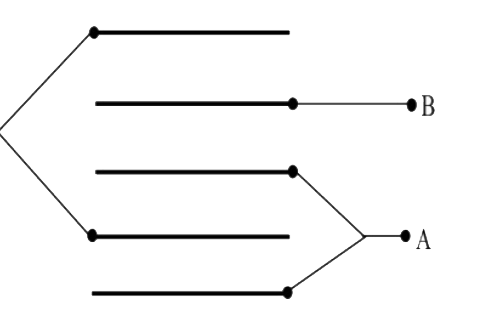 View Solution
View SolutionFour identical metallic plates (1,2,3, and 4) are arranged in air at same distance d from each other with their outer plates being connected together and earthed. If the plates 2 and 3 are connected with a cell of constant emf E, then ratio of electric fields between the plate is
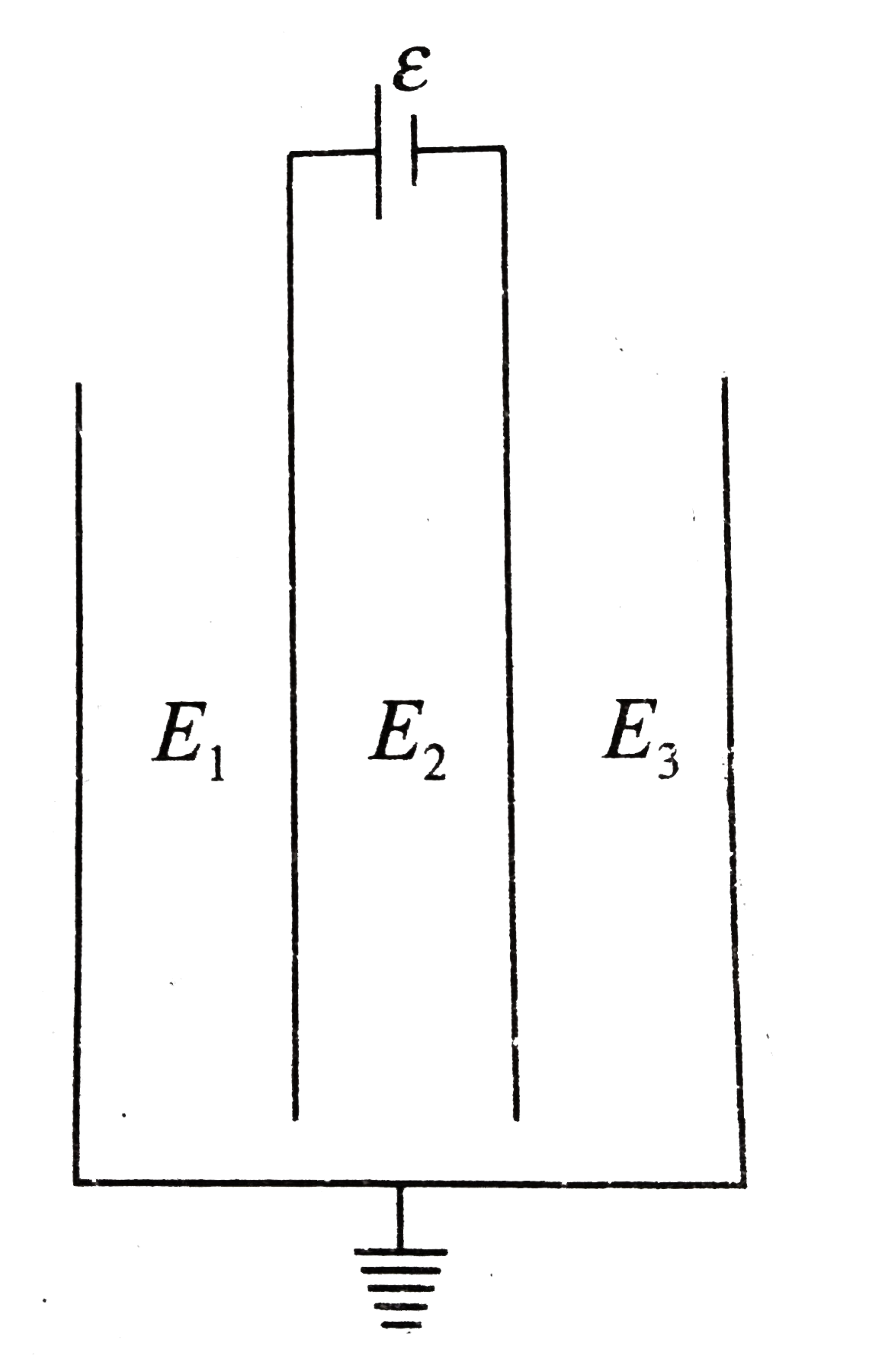 View Solution
View SolutionA parallel plate air-core capacitor is connected across a source of constant potential difference. When a dielectric plate is introduced between the two plates then:
View SolutionFive identical capacitor plates are arranged such that they make four capacitors each of 2μF. The plates are connected to a source of emf 10V. The charge on plate C is
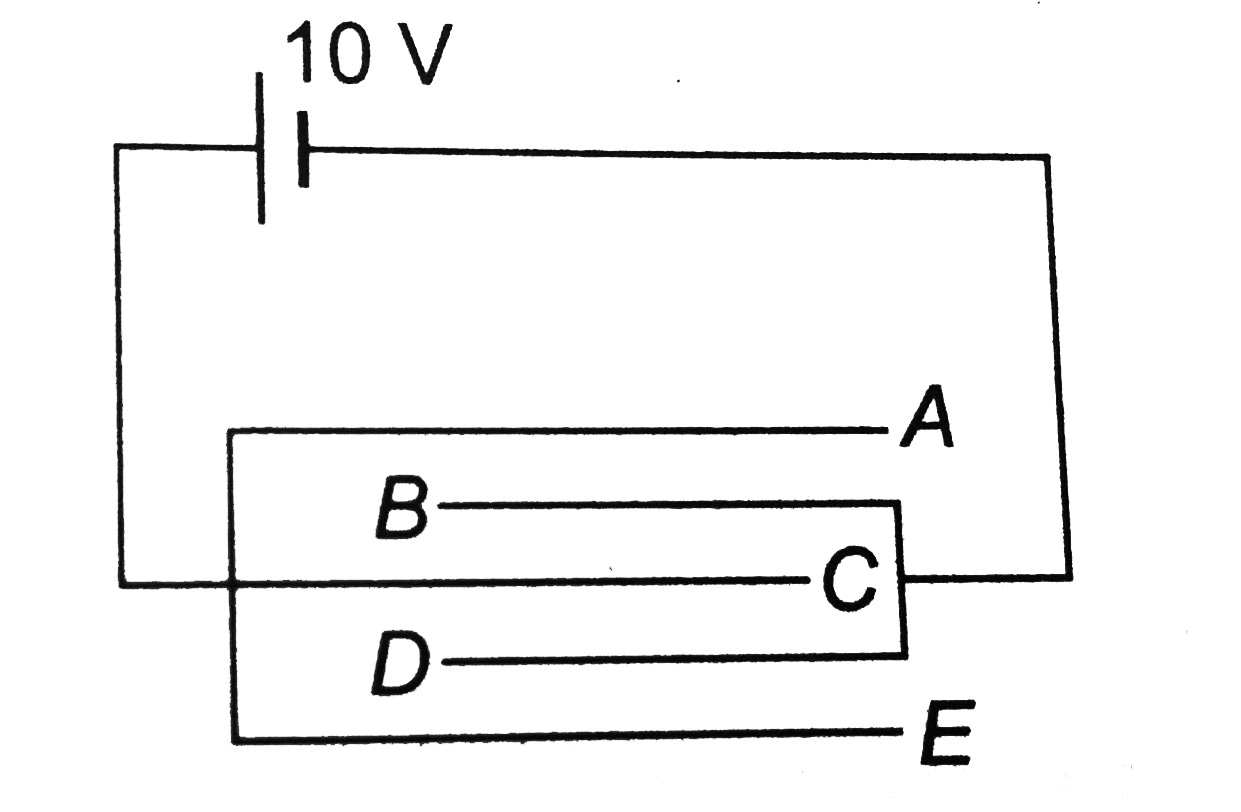 View Solution
View SolutionArea of each plate is A. The conducting plates are connected to a battery of emf V volts. Find charges q1 to qt.
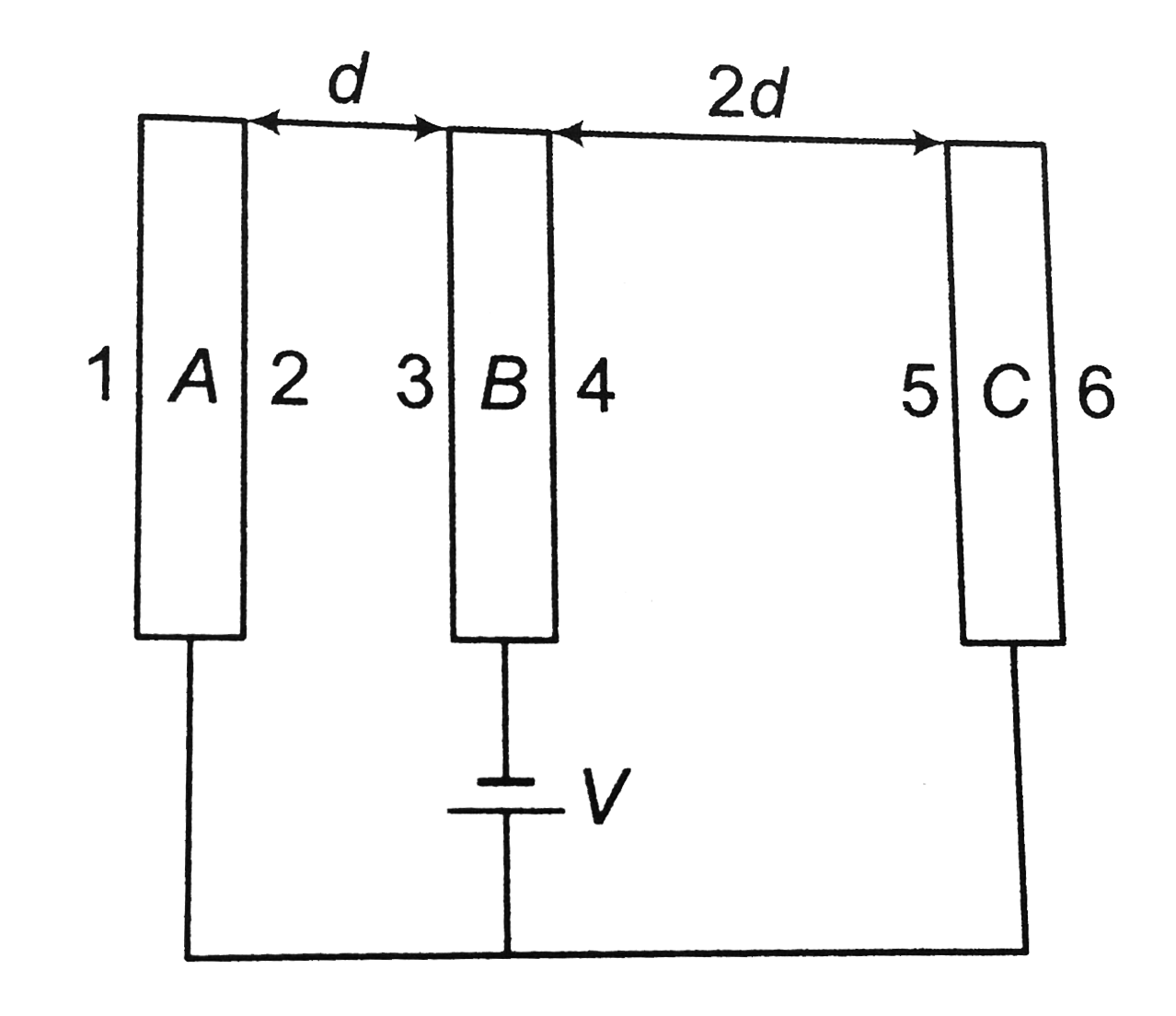 View Solution
View SolutionThe terminals of a battery of emf V are connected to the two plates of a parallel plate capacitor. If the space between the plates of the capacitor is filled with an insulator of dielectric constant K, then :
View SolutionEach of the three plates shown in figure has an area of 200 cm^2 on one side and the gap between the adjacent plates is 0.2 mm. The emf of the battery is 20V. Find the distribution of charge on various surfaces of the plates. What is the equivalent capacitance of the system between the terminal points?
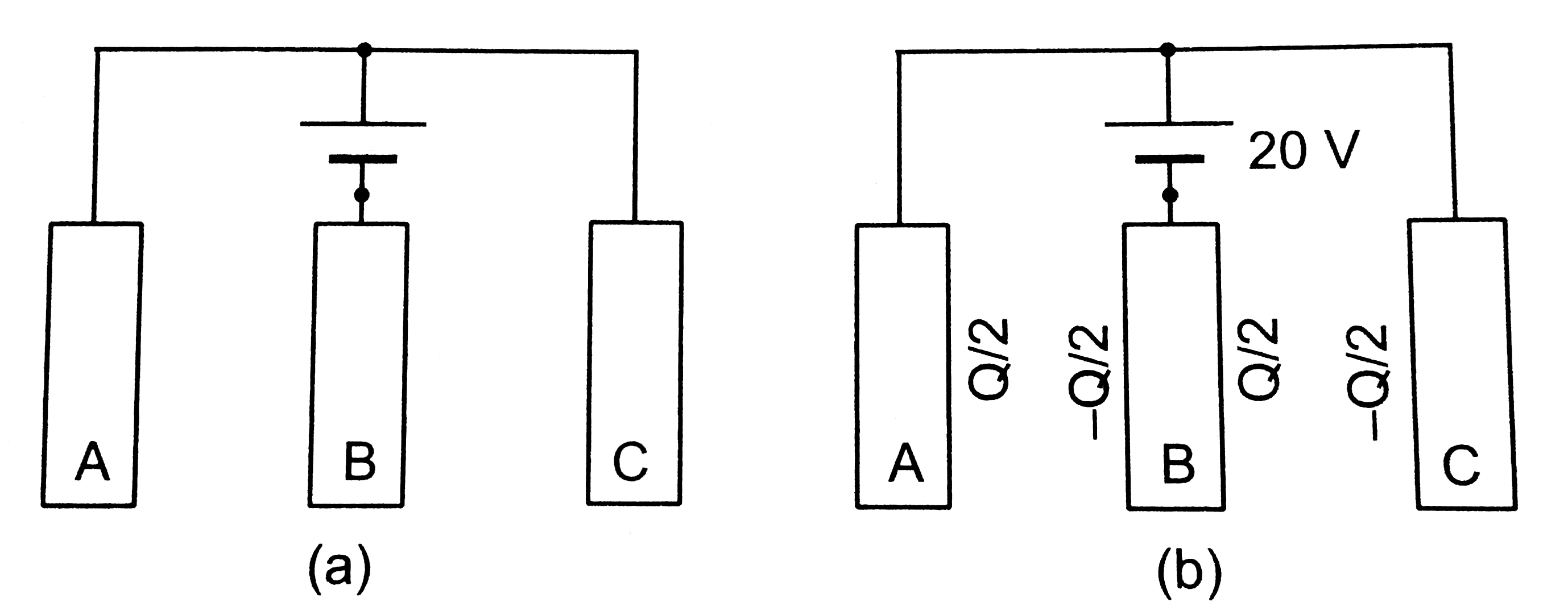 View Solution
View SolutionFour identical metal plates are placed in air parallel to each other with distances d from one another. The area of each plate is equal to A. The arrangement is shown in the figure. Find the capacitance of the system between plates P and R.
 View Solution
View SolutionTwo balls, each of radius R, equal mass and density, are placed in contact. Then the force of gravitation between them is proportional to:
View Solution

